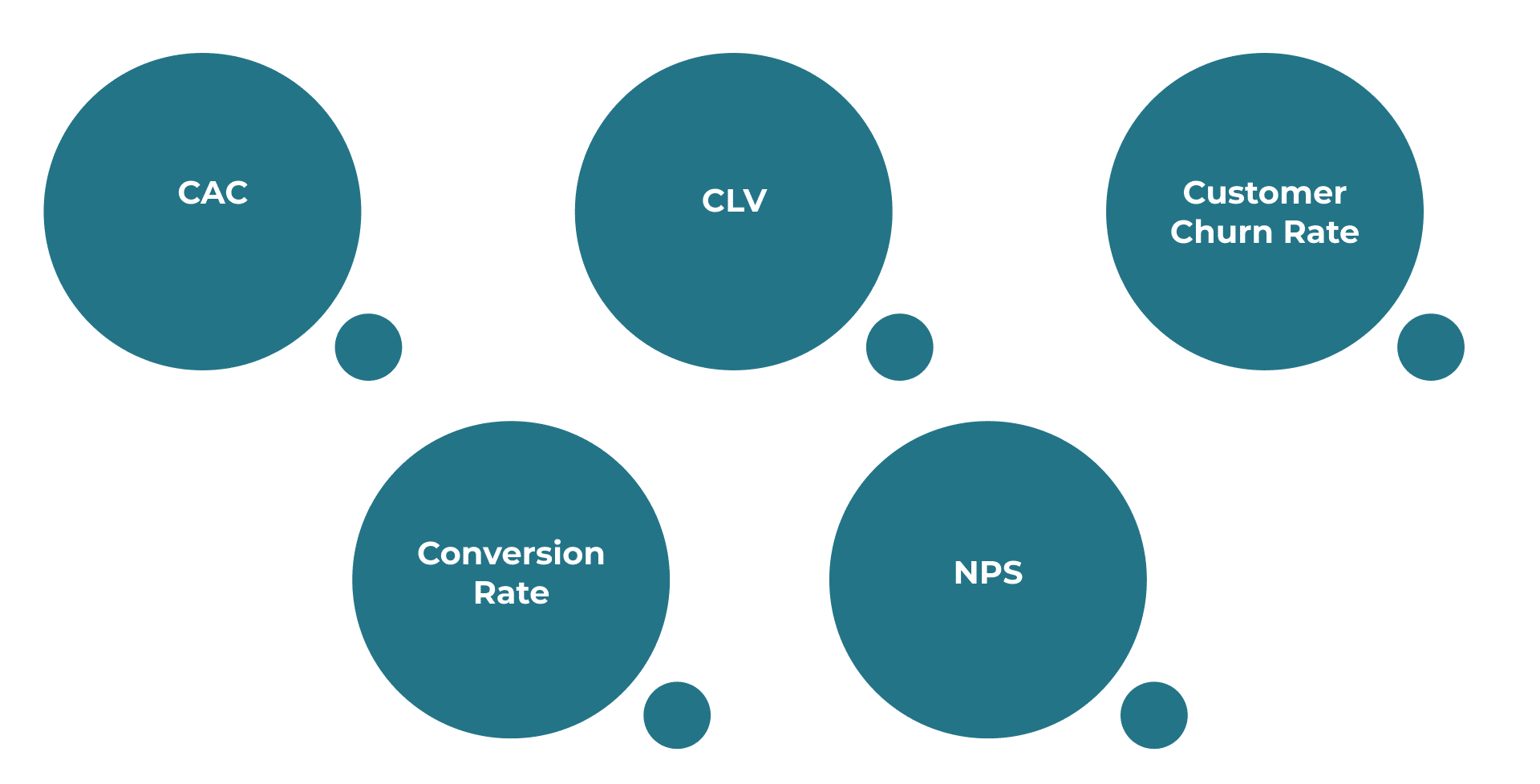How to Use CRM Reports for Effective Performance Analysis?
Your CRM reports contain valuable insights that can revolutionize your business performance and customer relationships. Smart analysis of these reports will help you identify trends, spot opportunities, and make analytical decisions that affect your bottom line.
Key CRM Performance Metrics
Measuring your customer relationship management effectiveness depends on tracking the right CRM metrics. Business growth requires understanding and monitoring several key performance indicators that affect your progress.
These CRM metrics deserve your attention:
- Customer Acquisition Cost (CAC): Measure how much you spend to acquire new customers by dividing total marketing and sales expenses by the number of new customers acquired
- Customer Lifetime Value (CLV): Calculate the total revenue expected from a customer throughout their relationship with your business
- Customer Churn Rate: Track the percentage of customers who stop doing business with you over a specific period
- Conversion Rate: Monitor the percentage of leads that successfully convert into paying customers
- Net Promoter Score (NPS): Review customer loyalty and satisfaction through customer feedback
Your CRM reports add more value when you understand these metrics in context. Comparing your CAC against CLV helps determine if your customer acquisition strategies are budget-friendly. A healthy CAC:CLV ratio typically stands at 3:1 or better, which means each customer’s lifetime value should be at least three times the cost to acquire them.
Your conversion rate helps you understand your sales funnel’s effectiveness. This metric reveals bottlenecks in your sales process and areas you can improve. Your churn rate alerts you to potential customer satisfaction problems before they affect your revenue.

How CRM Reporting Transforms Pipeline Management and Forecasting
CRM reporting tools will revolutionize your sales performance. Your CRM system’s reporting capabilities can substantially boost pipeline management and forecasting accuracy that leads to better business decisions.
Pipeline Management and Forecasting Your CRM reports give vital insights into sales pipeline health and future revenue potential. Regular pipeline stress tests and reviews help you base forecasts on accurate data instead of guesswork. Research shows that top-performing sales managers are 52% more likely to excel at analyzing their sellers’ pipeline management.
Key CRM reports for sales performance include:
- Sales activity reports tracking calls, emails, and meetings
- Pipeline analysis showing deal status and revenue potential
- Lead source reports identifying most effective channels
- Sales forecasting reports predicting future revenue
Regular pipeline reviews with your sales team will maximize these reports’ value. These 30-60 minute sessions help you examine opportunities by stage gates, check revenue potential, and confirm close dates. This systematic approach eliminates “dead wood” from your pipeline and produces more accurate forecasts.
Your CRM’s forecasting tools can spot trends, identify high-performing sales reps, and highlight areas needing attention in your sales process. Note that current metrics combined with historical sales data create better predictions.
Optimize Customer Service with CRM Reporting
Customer service success depends on measuring the right metrics in your CRM system. Monitoring service indicators helps you spot areas that need improvement and boost customer satisfaction.
Your CRM reports need to track these crucial customer service metrics:
- First Response Time: How quickly your team responds to customer questions
- Average Resolution Time: Time needed to solve customer problems
- Customer Satisfaction Score (CSAT): Customer happiness levels after service interactions
- First Contact Resolution Rate: Problems solved in the first interaction
Regular analysis of these metrics will optimize your customer service performance. A rise in average response time might signal that your team needs more training or better processes. A drop in CSAT score can warn you about service quality problems before they affect customer retention.
Clean and accurate data in your CRM system ensures reliable reporting. Data validation and standardization will help you trust the evidence from your reports and make smart decisions about your customer service strategy.
Your CRM’s reporting features can reveal trends in customer interactions. This helps you identify service delivery bottlenecks and make targeted improvements to create a better customer experience.
Best Practices for Implementing CRM Reporting
A successful CRM reporting system needs a well-planned approach that prioritizes data quality and consistent execution. You can get the most value from your CRM system by following these important steps:
- Define Clear Objectives: Line up your CRM reporting goals with your business targets
- Establish Data Standards: Set up clear rules for data entry and management
- Implement Validation Rules: Add data validation checks to ensure accuracy
- Automate Key Processes: Make use of automation for data collection and report creation
The quality of your data plays a crucial role in CRM reporting success. Your regular quality checks should look at:
- Data completeness and accuracy
- Information timeliness
- Consistency between departments
- Removal of duplicate entries
Your team members who work with the CRM system need detailed training. They should learn proper data entry methods and report creation techniques. Schedule reviews every quarter to check reporting effectiveness and adjust your strategy as needed.
Your CRM reports need regular testing and optimization. Keep track of how often people use the system and collect feedback from stakeholders. This ensures your reporting system provides valuable analytical insights that help make better business decisions.
Conclusion
Data quality, consistent monitoring, and regular system updates are crucial for successful CRM reporting. Companies that focus on proper setup, team training, and standardized processes achieve better decision-making abilities and increased efficiency. Regular CRM report analysis creates stronger customer relationships and more effective sales strategies. The service quality improves as well. These elements are the foundations of sustainable business development.

